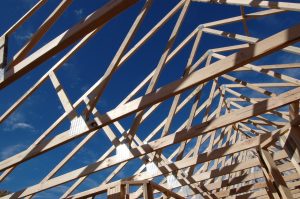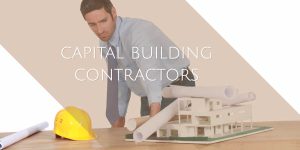When choosing the best products and materials for building your new home, renovation or house extension, there are a few things to consider.
In this day and age of environmental awareness, it’s important to consider how you can make your home more sustainable and environmentally friendly so that it will stand the test of time. Keeping your home properly insulated with energy-efficient wall materials will also reduce your power bills and heating costs, therefore saving you money in the long run.
Here is our guide to some of the most sustainable building materials you can use for your home.
Why do we need sustainable house materials?
Anything sustainable is energy-efficient. We need to use energy-efficient materials because they save us money and make a home more pleasant to live in, as they combine to help regulate internal temperatures. This not only makes your home cheaper to build but also cheaper to run.
Interesting fact: Buildings account for 60% of greenhouse emissions.
When producing these building materials, embodied energy is the amount of effort/energy which goes into the material. For instance, bricks, heavy steel and concrete contain lots of embodied energy due to their weight, which requires energy used by plants and equipment to produce and transport them.
This also makes such materials expensive and more difficult to handle. It also makes them less efficient in hot climates, earthquake-prone regions and areas that are difficult to access. Generally, the lighter the material, the less embodied energy it contains and the easier it is to work with and transport.
Advantages of using heavy building products/materials
Heavy materials – such as bricks, steel and concrete – provide thermal mass, durability and strength when correctly utilised. They can also be recycled, and offer a good fire rating for boundary and tenancy walls.
Some of the disadvantages are that these materials aren’t as suitable for prefabricated homes, which are gaining increasing market share – and they’re also more prone to cracking in reactive soils.
External thermal masses, i.e. external brick / concrete walls, are hot in summer and take a long time to cool down. They display the opposite response in cold climates. This makes the traditional brick home less efficient than building a lightweight clad building envelope.
Bricks are not as suitable in earthquake regions, and they’re particularly labour-intensive in remote areas or difficult access and small sites.
Mortars must be specially formulated for corrosive environments such as in coastal areas. Any Steel alternatives, require special coatings for corrosive environments and exhibit thermal bridging if not installed correctly.
Efficient materials for building a new home, renovation or extension in Melbourne
1.Floor structure
The two systems most used are the concrete slab and the more traditional timber platform floor. Both have their advantages and disadvantages.
Timber floors are more compatible when extending and renovating period style or older style homes, which already have timber floor structures. Extending same-with-same helps maintain similar structural movement, ventilation and floor levels.
They need to be well insulated and sealed and require correct underfloor ventilation. They can also provide additional storage space.
For sloping sites, the platform floor is generally easier and more cost-effective as it can circumvent or reduce the necessity for excavation.
Domestic second-storey and upper-level extensions and renovations almost exclusively use timber floor structures with the occasional steel beam included for large spans.
Concrete floors: The big advantage of concrete floors is their thermal mass, which helps maintain and regulate the inside temperature of the house. To perform at their best they still need to be insulated underneath before pouring.
Slabs are naturally more durable and are always used in garages and heavy traffic areas. As slabs are generally closer to the ground, they are sometimes used to achieve higher ceilings close to boundaries, where there are regulations limiting wall heights near boundaries.
2.Wall structural systems (wall frames)
Nearly all residential new home, extension and renovation builds in Melbourne use timber frames. Timber is light and easy to use and is now being used on some very large housing developments up to six storeys high.
Timber frames are sustainable because new trees can be regrown, which removes carbon dioxide from the atmosphere. Timber is easy to use and transport and there are only rare examples when other materials such as lightweight steel may prove advantageous.
Timber frames are at the forefront of the most recent technological development in buildings known as prefabricated housing. Timber frames can be prefabricated, saving time.
3.Wall claddings (wallboards)
Pound-for-pound modern fibre cement sheeting and weatherboard products, such as those produced in Australia by James Hardie and CSR, are increasingly becoming the go-to material for the professional Builder and Developer. They combine the durability of masonry with the lightness and ease of use required for cost-effective, fast and energy-efficient building.
The products are available in a variety of finishes, meaning designers have plenty of scope to individualize their designs.
4.Roof claddings (tiles or steel)
Roof claddings are typically either tiles or steel. Once again, these two main systems have their advantages and disadvantages. From a cost perspective, both are similar.
Tiles tend to be more durable but may not perform so well in high wind areas. They take longer to heat and cool, and they’re not as easy to insulate well. They won’t suit roofs flatter than 22 degrees.
Meanwhile, steel roofing is lightweight, so it requires less structure and can be used for all pitches of roofs.
Cold climates need a dark colour roof to attract the heat. Hot climates require light colour roofs – be it steel or tiles – to reflect the heat.
All roofing materials should have a layer of sealed insulation under them, as well as above the ceiling. Two such sealed layers form a cavity – which is an air layer regulating temperature differentials between outside and inside.
5.Windows and doors
Windows are the weakest point of a house when it comes to energy loss (heat transfer). As a rule, the number of windows and their opening sizes should be kept to a minimum – particularly on east, south and particularly west-facing walls.
North facing windows are the most effective but need an eave to protect them from direct summer sun. North eaves are usually somewhere between 600mm and 1000mm wide, still allowing the sun to heat the windows in winter when the sun angle is lower.
With the advent of 5-star building regulations (2005) and the reduction in double glazing costs, double glazed windows are now almost always being used, instead of single glazed units. Triple glazing is even better, but probably not worth the extra expense in most Australian situations.
Exterior awnings provide better shade protection from the sun than any extra layer of glass, particularly in east and west-facing applications where eaves have minimal impact. Pelmets with drapes or blinds do a great job reducing heat loss from inside the home in the cooler months. The window frame is also a factor in the heat transfer equation.
Timber-framed windows perform well and are less conductive than aluminium.
Some manufacturers of aluminium windows have found a way to reduce this heat transfer by inserting a non-conductive layer between the outside frame and the inside frame. This is great if you want a low maintenance window, but adds considerably to the cost compared with timber.
So timber is probably still the most efficient choice as it has the advantages of being a non-conductive, sustainable material, and low embodied energy to produce. If well painted and protected by eaves, these window frames should not have to be repainted for up to 10 years and if maintained correctly will last indefinitely.
6.Insulation and its uses
With all this insulation and modern sealed doors and windows, buildings are becoming more airtight. The downside of well-sealed homes is their requirement to be regularly well ventilated, to prevent moisture from condensation and stale air.
Without a quality Heat Recovery Ventilation system (HRV) it is more effort for homeowners to regularly and correctly ventilate their home. Ventilating on very hot or cold days negates all the heating and cooling effort expended.
There are numerous types of insulation materials, all of which serve slightly different applications, be it sound, temperature, fire, nonconductive, environmental sustainability to mention a few. To make an educated choice requires a great deal of research or advice from a green living builder or sustainability professional, many of which can be found through Passive House Association.
All domestic walls now contain R2.5 wall bats or equivalent insulation and external reflective foil sheeting prior to being clad. Some claddings such as rendered foam board have their own R rating, subject to size and correct installation.
Ceiling cavities should contain R 5 Batts, and the roof cover should be reflective foil-covered prior to installation of the roof tiles or metal roofing. Some designers/builders are now also using membranes all over to better draft proof their houses.
Active vs Passive efficiency
So far this article has been concerned about the passive ability of the building envelope to regulate inside temperature and reducing the carbon footprint of materials.
Mechanical systems (active systems). Sustainable home building materials (part 2) will examine sustainable active systems designed to reduce the energy consumption of the typical new, efficient home.
We provide premium building services in Melbourne
If you’re looking to build or renovate your home, get in touch with the experts. At Capital Building, we have a specialist team of expert designers and consultants who know all the ins and outs of the industry – and provide tips and advice on all the latest, most sustainable materials to use.
This will ensure your home stays comfy and will stand the test of time for years to come. Get in touch with us today to discuss all your renovation or building requirements.




